Types of Appliances
Separators
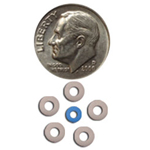
Separators are little rubber doughnuts that may be placed between your teeth to push them apart so that orthodontic bands may be placed during your next appointment. The separators will be removed before we place the bands. Separators do not mix well with sticky foods, toothpicks, or floss.
Class II Appliances
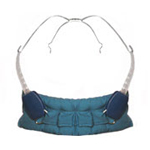
Headgear
Orthodontic headgear is a very important part of the treatment for some patients. Headgear creates forces that guide the growth of the face and jaws. It also is used to create space for teeth, move teeth into better positions, or to prevent teeth from moving. Your teeth may be tender for the first few days of wearing your headgear. This tenderness will disappear as you adjust to the new pressures. If instructions on usage are not followed, treatment will take longer and the treatment plan may have to change.
Always be careful when removing your headgear. If the headgear is removed carelessly, the part that fits in your mouth and attaches to your teeth could injure your lips, cheeks, face and possibly your eyes.
- Never remove the headgear until the straps have been disconnected.
- Never lift the headgear over your face.
- Never wear the headgear when running or playing sports.
- Bring your headgear with you to every appointment.
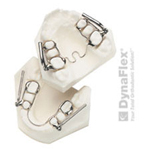
Herbst
The Herbst Appliance is very effective in correcting large overbites in growing patients. It is used to enhance the growth of the lower jaw in a forward direction, while at the same time applying pressure to the upper jaw in a backward direction. Expansion (widening) of the upper jaw may also be done if necessary.
The Herbst appliance is cemented on the back teeth and is active 24 hours a day. It is generally worn full time for approximately six months to one year. Depending on the patient's age and orthodontic problem, the Herbst can be worn as a standalone appliance or in conjunction with braces. The Herbst may be used instead of a headgear or more difficult appliances. In most cases, the Herbst facilitates large overjet correction without having to extract teeth or have jaw surgery.
 Forsus
Forsus
A Forsus appliance is used to correct moderate to severe overjets and reduce the need for headgear or extraction of permanent teeth. It works in conjunction with your braces using continuous gentle forces to provide efficient treatment of Class II malocclusions.
 The Pendulum Appliance
The Pendulum Appliance
This fixed appliance is a unique way of correcting a Class II malocclusion when Dr. Carcara feels your growth is near completion and headgear or a functional appliance is less efficient. It also eliminates the need to wear a headgear or functional appliance.
 Carriere Distalizer
Carriere Distalizer
The Carriere Distalizer is an orthodontic device utilized to correct a bite without removing permanent teeth when teeth have erupted incorrectly. With an effect similar to headgear, but without the use of a bulky appliance, the Carriere Distalizer helps correct the bite prior to the addition of braces or Invisalign. It is used in combination with a lower fixed lingual arch space maintainer and elastics.
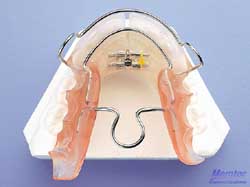 Bionator
Bionator
The Bionator appliance is a reliable and removable functional appliance used to correct a severe overjet. The major advantages are the ease of use and the ability to remove the appliance to maintain proper oral hygiene and to eat.
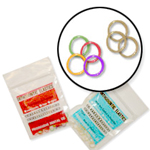
Elastics (Rubber Bands)
Wearing elastics (or rubber bands) improves the fit of your upper and lower teeth. Wear rubber bands as instructed, and remember that the rubber bands work far more efficiently if they're worn as prescribed.
Class III Correction Appliances
 Protraction Facemask
Protraction Facemask
The Protraction Facemask is an orthopedic device used for the correction of Class III skeletal malocclusions (under bite). It works by protracting the maxilla (upper jaw) and restricting mandibular (lower jaw) growth. It is worn 12-14 hours per day or as directed until correction is achieved. It is usually worn in conjunction with a RPE (fixed palatal expander).
Expansion Appliances
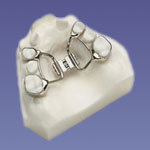
Palatal Expander (RPE)
The palatal expander "expands" (or widens) your upper jaw by putting gentle pressure on your upper molars each time an adjustment is made. Your orthodontist will instruct you about when and how to adjust your expander. When you achieve the desired expansion, you will wear the appliance for several months to solidify the expansion and to prevent regression.
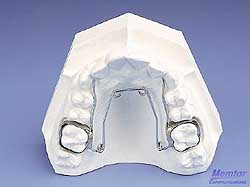 Quad Helix
Quad Helix
A Quad Helix is a fixed expander for the upper jaw which, unlike the RPE, does not require turning to be activated. It can be used to widen the upper jaw in the front and/or the back as well as rotate the upper first molars. It is used to widen the upper arch to make room for crowded teeth or to correct a dental cross bite (teeth).
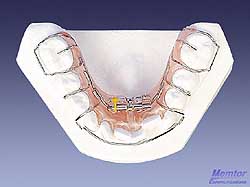 Schwartz Appliance
Schwartz Appliance
The Schwartz appliance is an upper or lower removable appliance worn to expand your arches and teeth. Your treatment may include an upper appliance, lower appliance or both. For optimal results your Schwartz appliance should be worn 24 hours a day and be removed only for eating, brushing, playing contact sports and swimming. Turn the key according to Dr. Carcara’s instructions. An adult needs to turn the key to ensure proper activation.
Habit Appliances
 Thumbguard
Thumbguard
Help your child break the habit of thumb or finger-sucking without distasteful nail polishes or expensive appliances. These rubber guards eliminate the pleasurable sensations of sucking, which can lead to permanent teeth and jaw deformations. It is recommended that thumb-sucking habits be extinguished before permanent teeth begin to erupt.
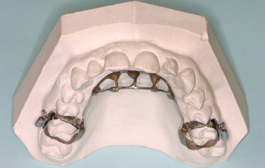 Tongue/Thumb Crib
Tongue/Thumb Crib
A tongue/thumb crib can be cemented into the mouth to extinguish thumb/digit-sucking and tongue-thrust habits.
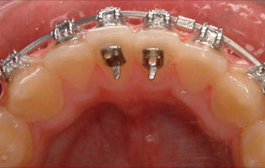
Tongue Trainers
Tongue Trainers may be used in severe tongue-thrusts to aid in closing an open bite.
Space Maintainers
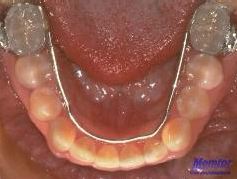
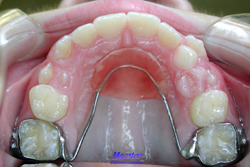
Fixed Lingual Arch (lower space maintainer) / Nance Holding Arch (upper space maintainer)
A fixed lingual arch or Nance holding arch may be used as a temporary fixed retainer to hold the permanent first molars from drifting forward after baby tooth loss. Since the baby teeth are larger than the permanent teeth that will replace them, saving the space (E-space) can be used to treat crowding as the adult permanent teeth erupt. These appliances may also be used in extraction spaces to control how the extraction spaces are closed.
Retainers
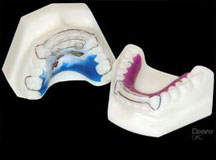
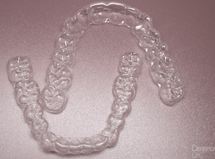
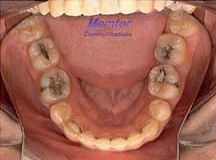
Once the active treatment period is complete, your braces are removed and you enter the retention period which is critical to maintaining the long-term stability of your new bite. Retainers are utilized to hold your teeth in their new positions until your bone, gums, and muscles adapt. You must wear your retainer as instructed, otherwise your teeth may return to their original positions and the benefit of wearing your braces will be lost. Dr. Carcara utilizes three types of retainers: removable retainers, fixed retainers, and invisible (Essix) retainers. He will determine what type of retainer(s) you need and how long you will need to wear your retainer. In some cases, permanent retention may be necessary.
Tips for Caring for Your Retainer
- Always wear your retainers as instructed by Dr. Carcara.
- Handle your retainers with care. Retainers are easy to lose. If you take your retainers out, always place them in your retainer case for safety.
- Always brush your retainers with toothpaste at least twice a day. You can use a retainer cleaner such as Kleenite.
- If you are out and did not bring your travel toothbrush, rinse your retainer with water. Brush your retainer when you get home.
- Never play with your retainers by “clicking them” in and out of your mouth.
- Never leave your retainers in direct sunlight or heat.
- Always remove your retainers when brushing, flossing, playing sports, and swimming.
- If your retainer bends, breaks, or does not fit properly please contact our office to have new retainers made.
- If you have a fixed retainer remember to floss it daily with a floss threader to prevent cavities and periodontal disease. Notify our office immediately if glue comes off or the retainer breaks.
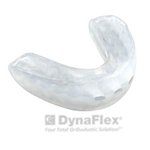
Positioners
Positioners complete the final tooth movements in your orthodontic treatment. With your full cooperation, you should only need to wear the positioner appliance for four to eight weeks.

